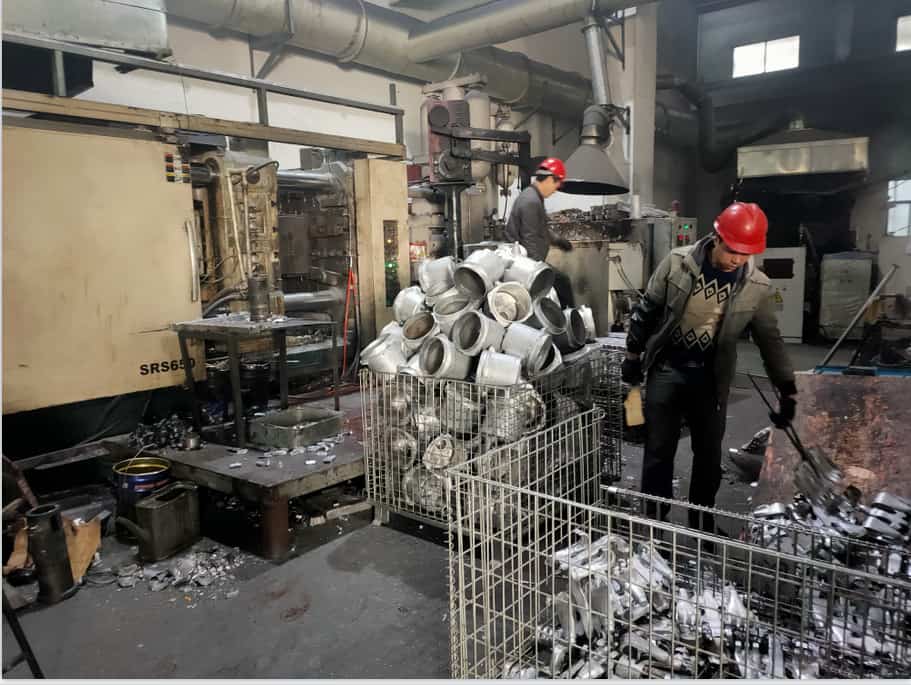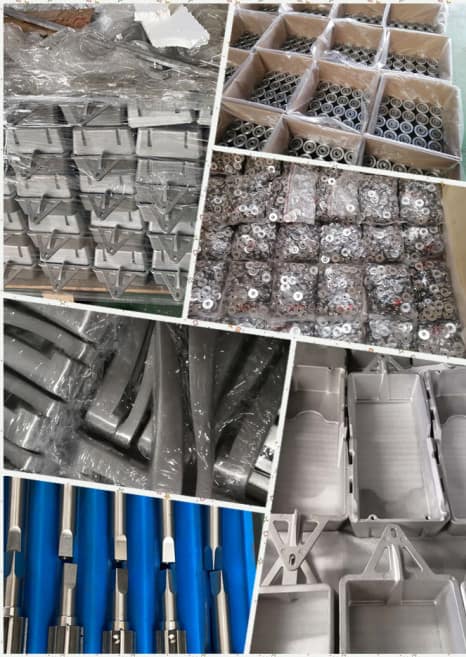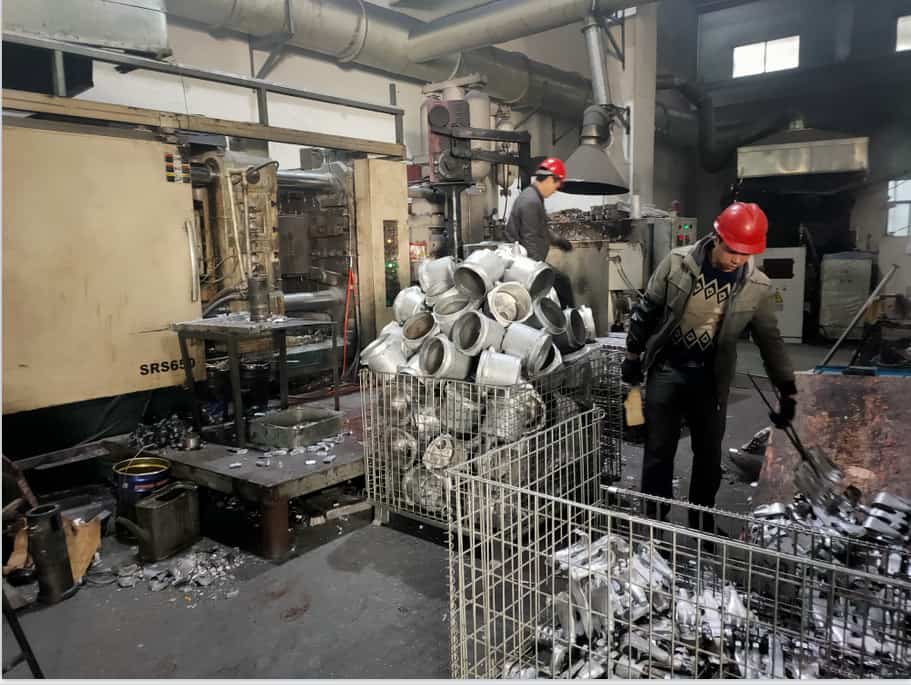Compared with ordinary aluminum alloys, high-strength die-casting aluminum alloys have better strength and corrosion resistance and use in machinery, automobiles, aerospace, and other fields. The demand is mutual.
While high-strength die-casting aluminum alloys are needed widely, the market will also increase day by day. But for now, the related technology of die-casting aluminum alloys is not enough to support its large-scale and high-efficiency production. It became a top priority that finds ways to optimize high-strength die-cast aluminum alloys and their heat treatment techniques.
Aluminum alloy has good properties such as lightweight, corrosion resistance, thermal conductivity, etc., and its plasticity is strong. So it is used in the production of mechanical parts.
Whether it is automobiles, household appliances, or mechanical appliances, the use of aluminum alloy is inseparable. Development determines demand. In recent years machinery industries have also opened up the market for aluminum alloys, and the need is also increasing.
Generally speaking, if the die-casting aluminum alloy is subject to gas heat treatment during the die-casting process, it is straightforward to cause the casting to bulge or deform. So in the die-casting aluminum alloy, heat treatment requires high technical skills.
1. Overview of high-strength die-casting aluminum alloy and its heat treatment
The high-strength die-casting aluminum alloy refers to the usages of high temperature and high pressure to die-cast aluminum alloy materials. This method is one of the casting processes that can save energy and improve the environment. , The heat treatment is a requirement to improve the performance of high-strength die-casting aluminum alloy castings.
To change the properties of aluminum alloys, the heat treatment process is so important. By heating a temperature and cooling after holding for some time, it can change the structure of aluminum alloys, improve their performance, and enhance the corrosion resistance of aluminum alloys.
Casting aluminum alloys using ordinary gravity alloy casting processes often result in large grains and shrinkage cavities. The high-strength die-casting aluminum alloy process and the liquid-forming technology can improve the phenomenon of shrinkage and porosity, and can also refine the grains. The forged die-casting parts must have good performance.
In addition, high-strength die-casting aluminum alloy and its heat treatment technology can cast castings with complex shapes. By filling the semi-liquid material into the mold, the utilization rate of the material can be improved without secondary processing.
High-strength die-casting aluminum alloy and its heat treatment technology can enhance its plasticity and tensile strength while maintaining the lightweight, electrical and thermal conductivity of aluminum alloy, and can be in machinery manufacturing, automobile manufacturing, and other industries.
2. The basic principle of aluminum alloy heat treatment
Aluminum alloy heat treatment mainly has two forms: annealing and quenching aging. Annealing is softening treatment, which can be used to eliminate internal stress in aluminum alloy materials. And quenching aging is heat treatment strengthening, which is used to improve the mechanical strength of the aluminum alloy.
2.1 Annealing
The aluminum alloy material is heated, kept at a temperature for some time, and then cooled slowly, which is the annealing process. The purpose is to eliminate residual internal stress, unstable structure, and uneven composition in aluminum alloy materials. According to the objective, annealing can be subdivided into stress relief, recrystallization, and uniform annealing.
(1) Stress relief annealing
The residual internal stress in the material can increase the stress corrosion tendency of aluminum alloy, and then affect the stability of the entire mechanical performance. By performing stress relief annealing on the material, the internal stress of the aluminum alloy casting can be reduced while retaining the strength and hardness of the original processing.
The biggest factor affecting stress relief annealing is temperature. If the heating temperature is too high, it will affect the strength of the aluminum alloy. If the heating temperature is too low, it will lead to insufficient internal stress relief. It will take more time to eliminate internal stress, but this will reduce production efficiency.
(2) Recrystallization annealing
Recrystallization annealing can refine grains, eliminate internal stress, reduce the hardness of the aluminum alloy, and improve the plastic deformation ability of aluminum alloy. Heating temperature, holding time, and heating speed are all factors that affecting recrystallization annealing. For the same alloy material, the higher the heating temperature, the shorter the holding time. The purpose of this is to prevent grain growth in the recrystallization stage.
On the contrary, The lower the heating temperature, the longer the holding time to avoid insufficient crystallization. But this will consume more time for the holding process. To obtain a fine and uniform structure and improve production efficiency, the heating temperature should be increased and the holding time shortened during recrystallization annealing.
(3) Uniform annealing
When pouring castings, it is very easy to cause unbalanced crystallization due to too fast a cooling rate, which in turn affects the strength, hardness, and corrosion resistance of the aluminum alloy. The uniform annealing process is similar to other annealing processes. The alloy is heated to a temperature close to the melting point, and then slowly cooled after a certain period.
2.2 Quenching aging
(1) Solution treatment
The factors affecting solid solution treatment are mainly heating temperature, holding time, and cooling temperature. The high temperature of quenching and long time holding will make the alloying elements evenly distributed in the crystal lattice, so that the strengthening phase dissolves more fully, which has a great influence on aging. Good promotion effect.
(2) Prescription
The solid solution is in an unbalanced state after undergoing quenching and will decompose and precipitate excess solute atoms. Aging is divided into natural aging and artificial aging. It can be precipitated at room temperature, which is called natural aging, but natural aging can only complete the initial stage. Artificial aging is to increase the activity of atoms by increasing the temperature, and then precipitation. For the same alloy, the factors affecting the aging effect are the quenching heating temperature and cooling rate, the plastic deformation before aging, and the temperature and time of aging itself.
(3) Regression processing
Regression treatment is theshort-term high-temperature treatment of quenched and aged products to restore them to the new quenched state. The purpose of regression treatment is to improve the plasticity of aluminum alloy and facilitate cold bending.
3. Difficulties in high-strength die-cast aluminum alloy and its heat treatment technology

3.1 Difficulties of die casting process
- When casting high-strength aluminum alloys, the larger the geometric size of the castings, the longer the alloy filling time will directly increase the difficulty of casting aluminum alloys, affecting the production efficiency of die-castings and their performance.
- Due to the large wall thickness in casting, high-strength aluminum alloy is prone to local inhomogeneity, which affects the solidification effect of castings.
- To meet the actual needs, the mechanical properties of the aluminum alloy must be ensured when performing high-strength aluminum alloy die-casting work. The performance indicators of some large shell castings are often higher than the national standards, which can ensure the quality and life of the equipment, but also bring a certain pressure to the die-casting work. The complexity of the process will directly affect the quality of the castings.
3.2 Difficulties in the heat treatment process Targeted treatment of high-strength
Aluminum alloys by heat treatment can effectively improve the performance of high-strength die-casting aluminum alloys, but at the same time, it is easy to cause deformation of the castings. If you want to have a better grasp of the heat treatment process, It is necessary to understand the difficulties of the heat treatment process.
- The large size and difference in wall thickness of high-strength die-casting aluminum alloys will cause deformation after heat treatment. And it is difficult to achieve the desired effect even if the deformed casting is repaired.
- When heat-treating high-strength aluminum alloys, the requirements for mechanical properties are higher than the national standards. In the processing of high-strength aluminum alloys, the yield strength needs to be set to about 70% of the tensile strength, and the tensile strength requirements of aluminum alloys in heat treatment will be higher.
- When the strength requirement is exceeded during heat treatment, it will cause aluminum alloy.The plasticity decreases,and makes it difficult to achieve the expected heat treatment effect.
- When heat treating certain high-strength die-casting aluminum alloys, due to the lack of necessary reference materials, the difficulty in the actual process increases, and the performance of the aluminum alloy after heat treatment is greatly reduced.
4. High-strength die-casting aluminum alloy and its heat treatment process plan
When casting and heat treating high-strength aluminum alloys, it is necessary to formulate a complete process plan to “escort” the entire process. And the process plan should be formulated according to actual needs, fully considering the strength and corrosion resistance of high-strength aluminum alloys, so as to ensure that the produced high-strength die-casting aluminum alloys can meet the standards and be put into the market.
4.1 Casting process of high-strength aluminum alloy
- Evaluate the quality of aluminum ingots to understand the content of impurities.
- Before determining the casting plan, fully consider the tensile strength and yield strength of the aluminum alloy, and strictly control the elongation of the aluminum ingot to ensure the quality of the alloy.
- Problems in the casting scheme should be analyzed and dealt with in time to enhance the applicability of the casting scheme.
4.2 Heat treatment process plan
- Set reasonable heat treatment process parameters, ensure the process flow, and control the heating temperature and holding time.
- Adopt a scientific and reasonable cooling method to cool the casting after solid solution treatment.

Conclusion
High-strength aluminum alloy is a high-performance material, widely used in industrial, military, and civil fields. In the production process of high-strength die-casting aluminum alloy, the heat treatment process is the key technology to ensure the performance of aluminum alloy materials. During the production of high-strength die-casting aluminum alloy, it is only by continuously strengthening the heat treatment technology to improve the processing level and promote economic development, and then it is necessary to improve the degree of attention to the heat treatment process.

